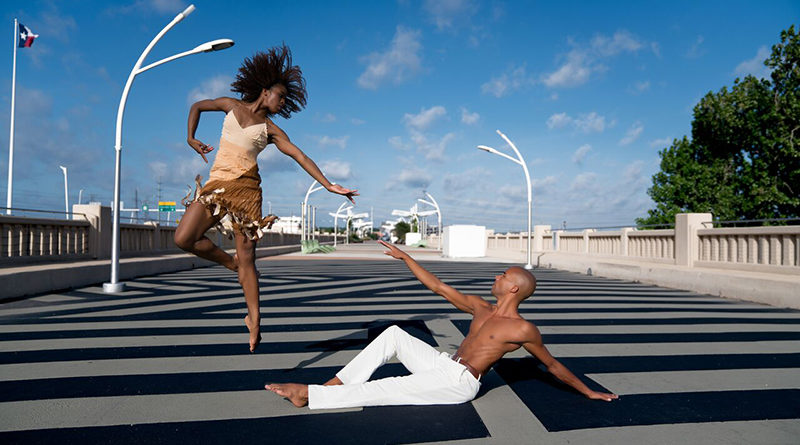SMU Study: Most Arts Groups Operate ‘Cash-Strapped’
Dancers Hana Delong and Sean J. Smith perform for Dallas Black Dance Theatre. (Photo: The Dallas Dance Project)
When soprano Kathleen Battle came to North Texas in June to sing at the Winspear Opera House, she called upon Dallas Black Dance Theatre to enhance her performance of Underground Railroad—A Spiritual Journey.
It was a short-notice request, yet DBDT dancers Lailah Duke and Xavier Mack added a “higher point of poignancy” for the packed house that included former first lady Laura Bush, according to one review.
Now in its fourth decade, DBDT, 2700 Ann Williams Way (a street named for its founder), has an “excellent track record of quality,” executive director Zenetta S. Drew said. It’s a major touring company, but it also conducts programs for Dallas schools.
Yet despite its acclaimed service to the Dallas art scene and the broader world of dance, DBDT operates with scant working capital.
That’s typical of small arts organizations, according to a recent study by the National Center for Arts Research (NCAR) at SMU. Released in May, NCAR’s Working Capital Report found that on average, “the majority of arts and culture organizations are cash-strapped.”
“I live in crisis mode every day,” Drew said. “We pay bills with no breathing room. That stress doesn’t allow the board, the staff, or the dancers to be as efficient as they could be.”

The NCAR report found many arts groups, including museums, have about five months of working capital. But for small performing arts groups, like DBDT, the average is “equivalent to fewer than two months” of total expenses.
“While few arts leaders wake up with excitement over working capital management, many lose sleep over it,” said Zannie Voss, director of NCAR.
The director of the Nasher Sculpture Center, 2001 Flora St., a few blocks away from the dance theatre, understands this challenge.
“[We] have high fixed costs, and program costs can not only be high, but they can be lumpy,” said Jeremy Strick, Nasher’s director. “It can be helpful to have a larger pool of working capital.”
DBDT, meanwhile, intends to grow resources.
Before, Drew explained, much of the funding came through “project” giving for particular performances or visiting choreographers. That money is essential, she said, but more endowments and annual giving commitments will bring consistent funding to help sustain the theatre.
Therefore, the staff and board of directors are working to elevate perceptions of DBDT—that supporting it is essential to the arts, not optional. African American arts groups have always faced that challenge, Drew said, but her organization strives to overcome it.
For example, DBDT, along with other members of the International Association of Blacks in Dance, was recently selected to share a $2.63 million grant from the Andrew W. Mellon Foundation.
The money will pay for tools and consultants to help improve financial stability, and the theatre is already working with NCAR to do just that, Drew said. All these efforts, she added, boost confidence.
“If you identify a problem,” Drew said, “and don’t take steps to solve it, donors step away.”









